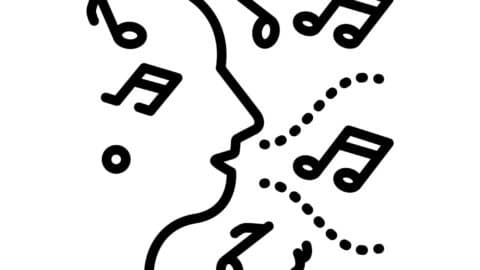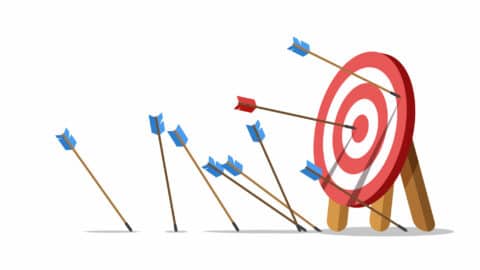They are iconic, those extremely high notes sopranos sing in some operatic arias. They are notes with which the singers ascend in chordal steps to dizzying heights, penetrating and of brilliant clarity. One of the most famous examples is the aria of the Queen of the Night from Mozart's "Magic Flute". Here we see soprano Diana Damrau at close quarters, living up to her role as the vengeful queen:
What is she doing up there with her voice? And can I learn to do that? These are questions that probably come to the mind of every singing-enthusiastic listener here.
Singing in the whistle register: effects and special features
Much is still unexplained, but many voice scientists are certain that high female voices have another register above their head voice. For sopranos, the change to this highest register usually begins above the C''' (or D'''), which is twice as high as the famous high C (the C''). It is usually called the "whistle" or "flageolet" register because the notes are reminiscent of the sound of whistling. In the English-speaking world, this is referred to as "whistle notes".
At this pitch, the vowels are no longer distinguishable from each other, and the sung melodies finally lose their text comprehensibility. That is why singing in the whistle register is used mainly for ornamentation or as a dramatic effect. In classical music, there are the apt terms "coloratura aria" and "coloratura soprano" for this.
We also encounter these tones of unearthly brilliance in musicals, pop and R&B. We hear them as an ornamental effect, to characterise a role or character, or as a means of expressing elevated feelings or moods. Singing in the whistle register is a skill that some male voices also possess, but which high female voices in particular have cultivated.
Mariah Carey, for example, is known for going beyond her head voice in her songs, into the realm of whistling tones. In the video below, we see her live with her song "Emotions". Similar to coloratura sopranos, she sings these highest notes in steps upwards, in classical terms: in fast "arpeggios".
You may have noticed while watching that Maria Carey even uses her notes in the whistle register with Vibrato can sing. She can still control her singing well even in the whistle register, and we hear no abrupt transition: her highest coloratura notes are connected seamlessly to her head voice - just as in the Queen of the Night.
From a voice science perspective
In terms of vocal science, there are doubts today as to whether sopranos like Diana Damrau really enter a new mechanism of tone production when they sing their coloratura notes. Many voice researchers in the past, but also still today, assumed that when singing at this height, most of the vocal cords are damped and only a small part vibrates - under high tension.
Some recent observations of vocal cord vibrations, on the other hand, suggest that sopranos produce these notes essentially as they do in the lower head voice range. Singing in the chromatic octave would then be more like singing with an upwardly extended head voice: The vocal cords are extremely stretched and vibrate at the edge.
Whatever the mechanism of tone production here, it should be noted that what is so admirable and worthy of imitation in examples such as the above is the controlled singing in the chromatic octave, tied to the head voice. Something quite different are the whistling sounds that children or adults sometimes produce when screeching in fright or play.
Presumably, these sounds are produced by air being forced through a tiny gap in the vocal chords at high pressure. Such air turbulence can sometimes sound clear as a bell. Most of the time they are unattractive, but above all hardly controllable and unsuitable for singing.
Exercises and tips
Do you feel comfortable with Singing in high soprano registerthen it's worth exploring your whistle register as well. The best way to do this is to use your head voice as a springboard.
- The king or better queen discipline are fast arpeggios, which are layered like the notes of a chord. Start with the ascending and descending arpeggios in the upper part of your head voice. Then repeat the arpeggios in semitone steps upwards, into the pitch range of the whistle register.
- Arpeggio or scale exercises in the whistle register require careful vocal preparation. Take time to warm up your voice well, with lip bubbling or soft sirens up and down. Also sing vocalises in all pitches beforehand, with a light voice and an early transition into the head voice.
- A few minutes of whistle register exercises per session is enough. The laryngeal muscles that stretch your vocal cords to these extreme heights need time to develop - as does the fine connective tissue of your vocal cords themselves.
By the way, the fast ascents and descents in chord steps are also great exercises for your vocal agility and speed in note transitions - in all vocal registers. Depending on the style of music you prefer, you can use not only major or minor arpeggios, but also pentatonic scales or blues scales.
If you are planning to expand your whistle register, it is best to get support from an experienced singing teacher.
You can find great exercises to build up your voice and expand your vocal range in my Online singing courses.
I look forward to seeing you,






